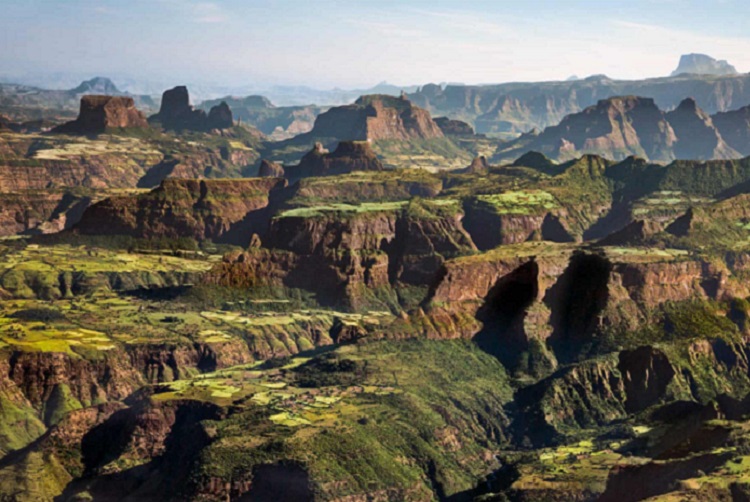Natural Attractions
Aledeghi Wildlife Reserve
Set in the southeast of Ethiopia, Aledeghi is a little-visited wildlife reserve which contains a reasonably good range of wildlife and offers some superb interaction with the local Afar tribespeople. Not a conventional safari location, but nonetheless one of our favourite ‘secret’ spots. Aledeghi is the large expanse of grassland plains one finds extending from the foothills of the Asebot Mountain to the Awash-Arba asphalt road. It is nearly 50 km in length measuring straight from Awash-Arba towards the town of Gedamaitu. The climate is generally d ry and arid conforming to the northeastern parts of the Afar Triangle. The plains are home to a number of wildlife including Grevy‟s Zebra and Wild Ass. Both the Grevy‟s Zebra and the Wild Ass are critically endangered species. Other larger mammals include Gerenuk, Salt‟s Dikdik and Warthog. Notable bird species include Ostrich, Arabian Bustard, Hartulaub‟s Bustard, Kori Bustard, Grasshopper Buzzard and Carmine Bee-eater.
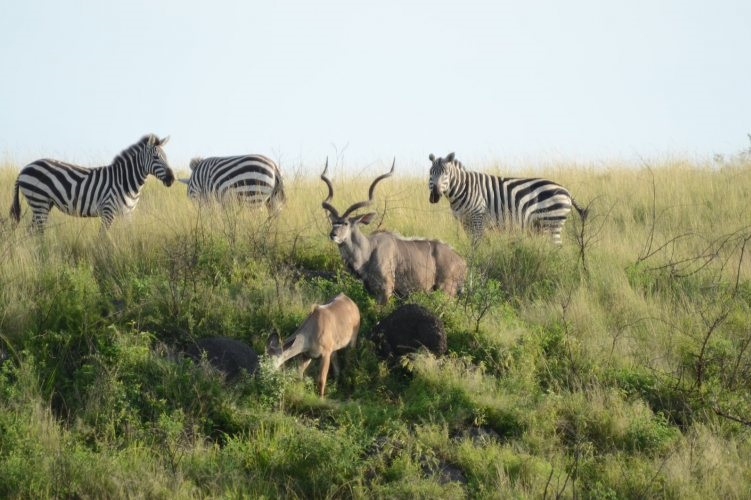
Awash National Park
The Awash National Park is located in the lowlands at the heart of the rift valley, east of Addis Ababa (approx. 250 km) adjacent to the Awash River. It is one of the finest nature reserves in Ethiopia. The Awash River is one of the major rivers of the Horn of Africa and waters important agricultural lands in the northeastern parts of Ethiopia. The Awash National Park, surrounding the dormant volcano of Fentale, is a reserve of arid and semi-arid woodland and savannah, with riverine forests along the Awash River. Forty-six species of animals have been identified, including Beisa Oryx gazelles, wild pigs, dik-dik, baboons, kudus, giant tortoise, hippos, aardvarks, hyrax, and Colobus monkeys. Bird life is prolific, particularly along the river and in forest area, 392 species have been recorded.
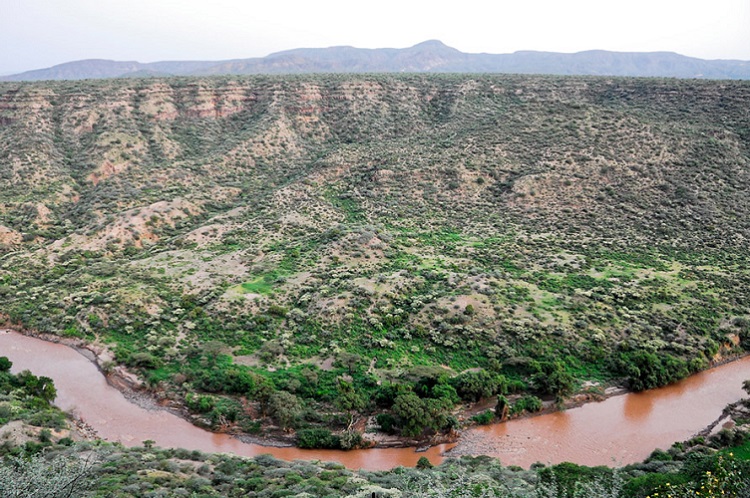
Bahir Dar & Lake Tana
Bahir Dar is one of the leading tourist destinations in Ethiopia, with a variety of attractions in its close surroundings. The city is located approximately 578 km (360 miles) north-northwest of Addis Ababa, at an elevation of 1’840 meters (6’036 feet) above sea level. The town today, with its wide, palm-lined avenues and gardens overflowing with tropical vegetation, is a place of considerable economic and commercial importance. Bahir Dar’s two markets are both worth a visit: the general market, displaying colorful woven cloth and a wide range of supplies (including coffee); and the roadside market, specializing in baskets. There are also a variety of handicraft and weaving centers. Bahir Dar is considered one of the most beautiful, well planned, and safest cities in Etthiopia. Visits to Lake Tana’s island monasteries and to the nearby Blue Nile Falls form the main focus of activities.
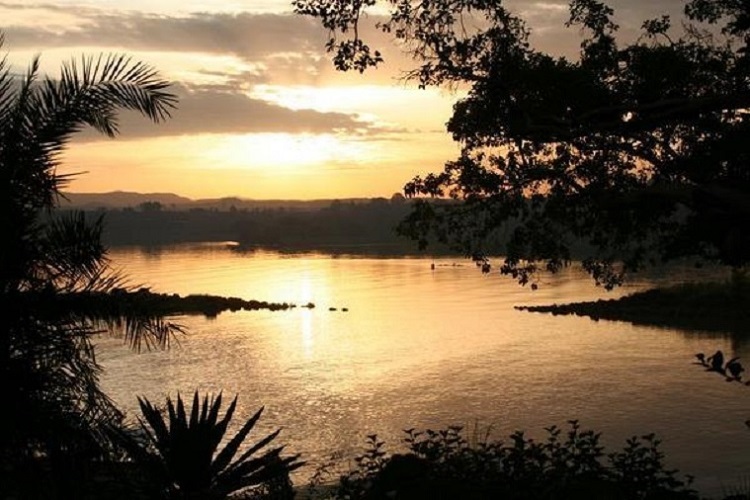
Bale Mountains National Park
Located 400 km southeast of Addis Ababa, Bale Mountains National Park contains a spectacularly diverse landscape. The high altitude, afro-montane Sanetti Plateau rises to over 4’000m and includes the highest peak in the southern Ethiopia highlands. This undulating plateau is marked by numerous glacial lakes and swamps and surrounded by higher volcanic ridges and peaks. The southern slopes are covered by the lush and largely unexplored Harenna Forest. Bale Mountains National Park is the perfect destination for hikers, wildlife watchers, culture and nature enthusiasts, bird watchers and more! Explore one of the highest parks in Africa by horseback, go fishing or experience an authentic community trying local coffee and honey! One of the best sites to spot the rare and endangered Ethiopian Wolf is on the spectacular Sanetti Plateau as the sun rises.
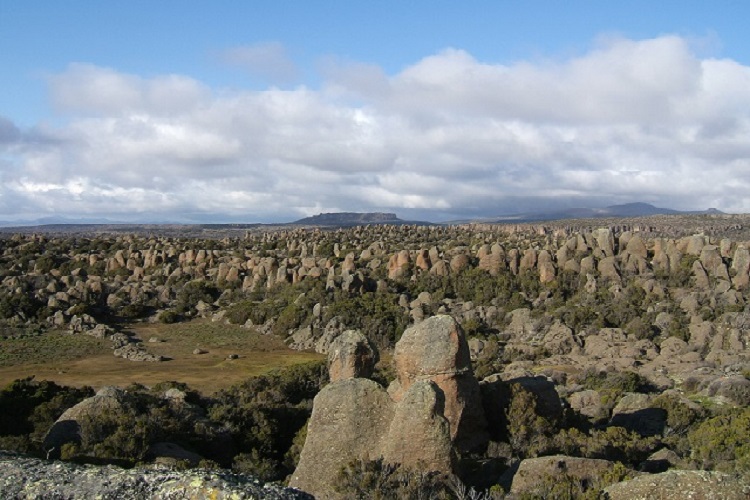
Danakil Depression
The Danakil Depression marks the northern end of the Great Rift Valley on the African mainland, the point where Earth’s forces are most actively tearing the continent apart. It is an extremely arid, hot desert area which stretches from the coastline of Eritrea through north-eastern Ethiopia and western parts of Djibouti. The Danakil is an area of outstanding geological interest, providing a unique window on the underlying processes which have created the Earth’s continents and land masses. Here, in relatively close proximity, geological features associated with the splitting of continental land masses are clearly seen, including intense volcanic activity (with one of the few permanent lava lakes on the planet on Mount Erta Ale), hot sulphur springs elaborately decorated with extraordinary coral-like formations as well as salt-encrusted lake beds. An expedition to the Danakil Depression will always be a unique adventure!
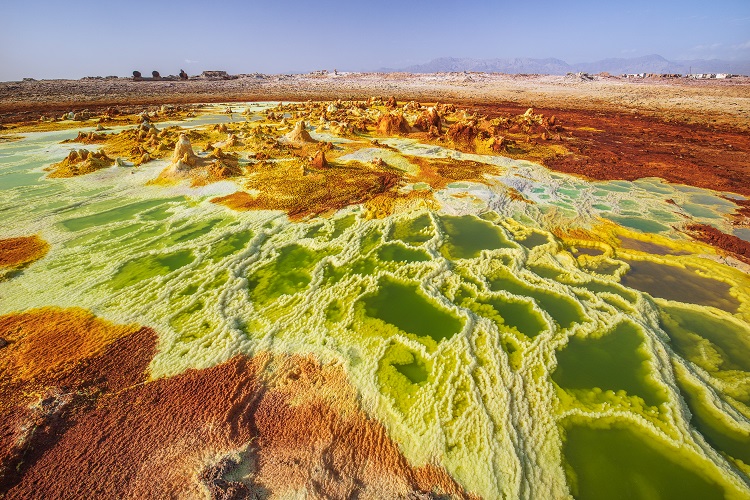
Erta Ale Volcano
Erta Ale volcano is a large basaltic shield volcano in the Erta Ale volcanic range in the central northern Danakil depression. It is famed for its persistent lava lake which has been active during most of the past decades since it was first discovered in the 1960s. Erta Ale is only 613 m high, but as typical for a shield volcano has a very gentle slopes and a large 40 km diameter base. The summit is truncated by a complex, elongated 1700 x 600 m wide caldera which contains vast lava flows and several larger and smaller pit craters, most notably the active north and south crater, which contains the lava lake at present. Erta Ale is one of the main attractions of the Danakil, and had become a popular tour destination in recent years.
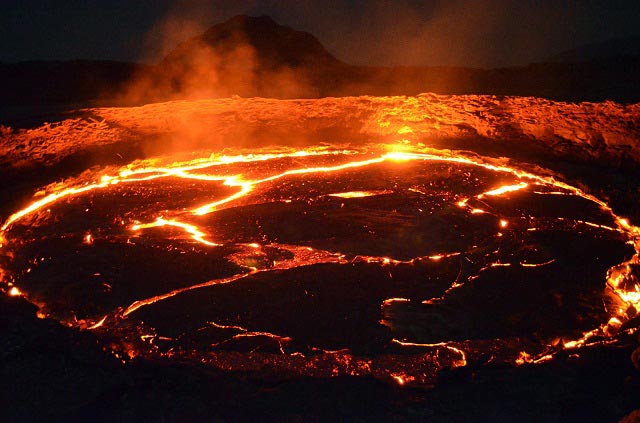
Rift Valley Lakes
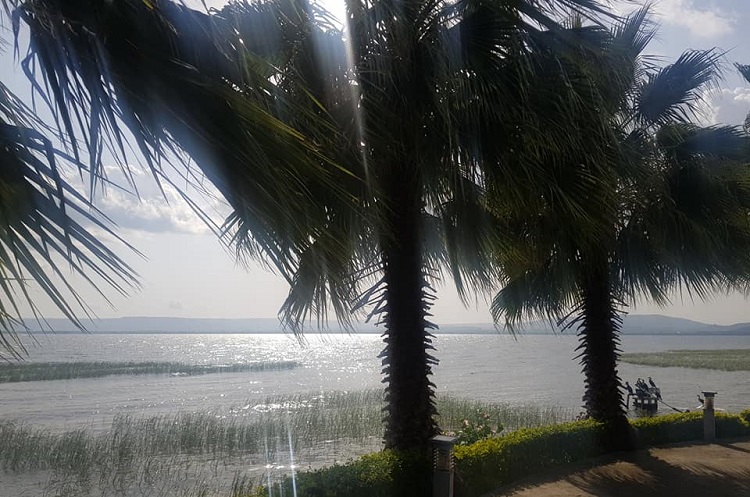
Simien Mountains National Park
The scenery in the Simiens is some of the most spectacular in the world.. The natural beauties of this region have always filled visitors from around the world with awe. Gentle highland ridges at altitudes above 3’600 meters above sea level, covered with grasses, isolated trees and the bizarre Giant Lobelia are found on the high plateau. The wildlife in the Simiens is unique. Three species are not found anywhere else in the world. The favorite is of course the Gelada monkeys which can be gound in groups of up to 500. It takes time to see a Simien wolf but with a little patience they can be found. The Walia Ibex is also unique to this area. Leopard, klipspringer, bushbuck, jackal and hyena are also found. The rich wildlife and incredible landscape were the reasons why the park was given the UNESCO World Heritage label.
